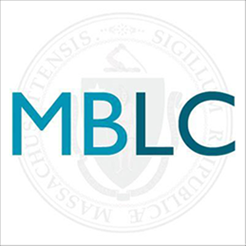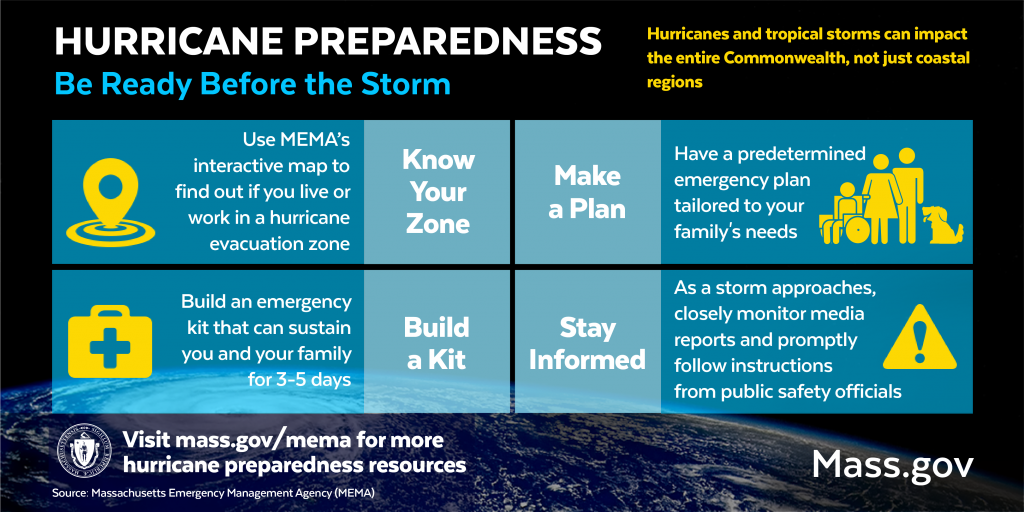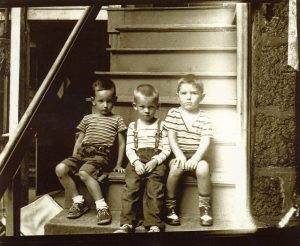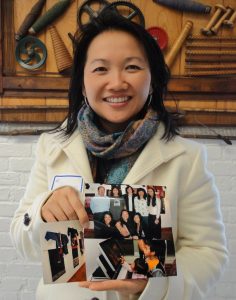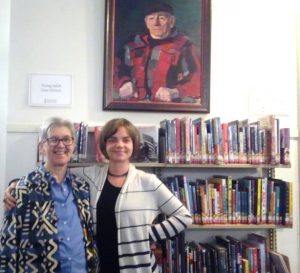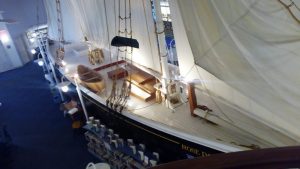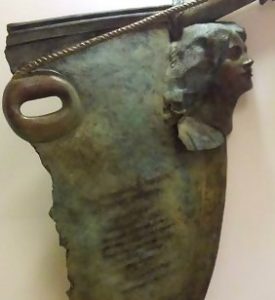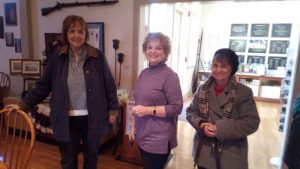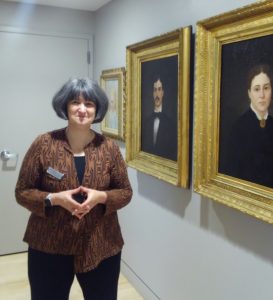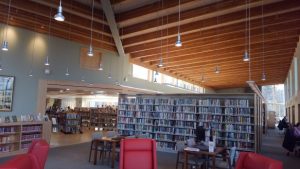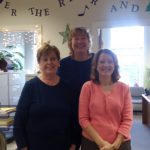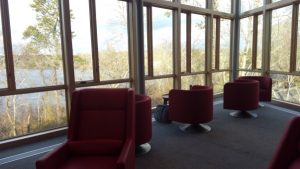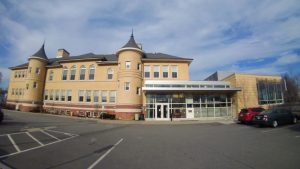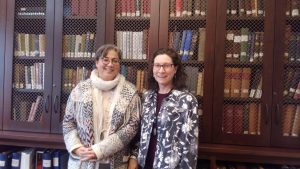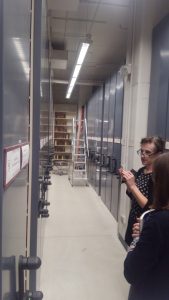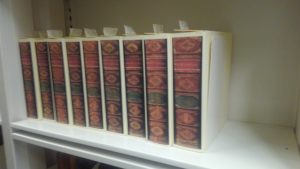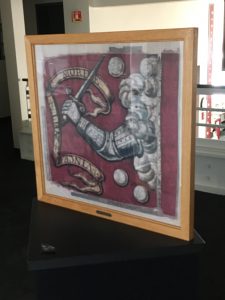🕙 MBLC Monthly Board Meeting on June 5th (Remote)
Contact: Rachel Masse
The regular monthly board meeting of the Massachusetts Board of Library Commissioners is scheduled for 10AM on Thursday, June 5th, 2025. This meeting is fully remote.
📰 MBLC Maintains some Databases, Support for eBooks, and ComCat
Contact: Celeste Bruno
At the annual Massachusetts Library Association conference, MBLC Director Maureen Amyot addressed the impact of ongoing federal uncertainty caused by the executive order and spoke about the MBLC’s efforts to preserve as many federally funded statewide services as possible. Director Amyot announced the FY2026 plan for statewide research databases, the statewide eBook program, and the Commonwealth Catalog. To read more about FY2026 databases, visit the MBLC website.
📰 Libraries Level Funded in Proposed Senate Budget
Contact: Rob Favini
The Senate Ways and Means released its proposed $61.3 billion state budget with $52,432,341 in funding to support libraries. As with both the Governor and House budgets, the Senate level funded across all budget lines for the Massachusetts Board of Library Commissioners (MBLC). The full Senate Ways and Means, House, and Governor’s budgets for libraries are available on the MBLC website. More information about funding priorities for public libraries in the proposed senate budget is available at the MBLC website as well.
📰 Sharon Celebrates New Library with Ribbon Cutting
Contact: June Thammasnong
On Monday, May 19, enthusiastic Sharon residents and public officials gathered at Sharon Public Library to celebrate the opening of the new library with a ribbon-cutting ceremony. The construction project was partially funded with a $7.5 million grant through the Massachusetts Public Library Construction Program (MPLCP) from the Massachusetts Board of Library Commissioners (MBLC). To read more about Sharon’s new library, visit the MBLC website.
🗓️ State Aid Season Begins
Contact: Cate Merlin, Jen Inglis
State Aid ARIS & Financial Report season are upon us! The FY26 ARIS survey will open on July 1st and close on Friday, August 15th, and the FY26 Financial Report will open on August 4th and close on Friday, October 3rd. We are offering six ARIS trainings this month and into early July, and please don’t hesitate to reach out to the State Aid team if you have any questions or concerns. More information and dates can be found at at the MBLC website.
ℹ️ Database Library Community Information (Online)
Contact: Maureen Amyot
Thursday, May 29 at 2PM – Registration & Zoom Link
Friday, May 30 at 9AM – Registration & Zoom Link
On Tuesday, May 20, the “State of the State” presented by MBLC Director Maureen Amyot at the Massachusetts Library Association conference included announcement about statewide services that have been impacted by the uncertainty caused by Executive Order 14238. These services include statewide databases, the Commonwealth Catalog, and the statewide Library eBooks and Audiobooks (LEA) program powered by Libby. For those unable to attend MLA, please register for an information session.
🗨️ Preservation Office Hours (Online)
Contact: Jess Colati
Tuesday, June 3 at 10AM – More Info & Zoom Link
Tuesday, June 17 at 2PM – More Info & Zoom Link
Open to all interested in ensuring safe and stable storage and improving collection management for your library or organization’s preservation projects. Connect with the MBLC’s Preservation Specialist, Jess Colati and colleagues around the Commonwealth that work to advance the protection of cultural collections during monthly office hours. Sessions and chats are not recorded or saved.
📅 Unlocking MassHealth: What You Need to Know to Help Your Patrons (Online)
Contact: Ally Dowds
Tuesday, June 3 at 2PM – Registration & More Information
Join Community Engagement and Education staff for an informative webinar designed to help Massachusetts residents, caregivers, and service providers better understand MassHealth—the state’s Medicaid and CHIP program. Whether you’re applying for the first time, assisting someone else, or just want to stay informed about recent updates, this session will give you the tools and resources you need to increase understanding and access for your library community. This session will be recorded and registration is required.
🤝 Library Trustee Orientation (Online)
Contact: Al Hayden
Wednesday, June 4 at 7PM – More Information & Zoom Link
Wednesday, June 11 at 7PM – More Information & Zoom Link
Wednesday, June 18 at 7PM – More Information & Zoom Link
Wednesday, June 25 at 7PM – More Information & Zoom Link
Libraries need active and engaged trustees now more than ever. If you are a new trustee hoping to learn more about your role or a more seasoned trustee looking for a deeper understanding of the basics, you are invited to the MBLC’s Library Trustee Orientation. This is a 4-session course where you will learn more about your role and responsibilities as a Library Trustee. Registration is required.
🤝 Library Advisory Office Hours (Online)
Contact: Al Hayden
Monday, June 9 at 9AM – More Information & Zoom Link
Monday, June 23 at 2PM – More Information & Zoom Link
Open to all Directors, Trustees, Library Friends, and Foundation Members. They are designed to be an open-ended, safe space for questions and interaction among participants. Sessions will NOT be recorded, and chats will NOT be saved. Registration is not required; stop by anytime during the hour!
🖥️ Librarianing for Social Flourishing (Online)
Contact: Jack Martin (MLS)
Friday, June 13 at 2PM – More Information & Registration
Please join us on Friday, June 13th from 2-3:30pm for the interactive webinar “A Library is Not a Computer: Librarianing for Social Flourishing,” led by Dr. Margo Gustina. In this 90-minute interactive webinar, Dr. Gustina will introduce how librarians build neighborhood pathways toward wellbeing based in years of continuous community-based research. This event is co-sponsored by Simmons University School of Library and Information Science, the Massachusetts Library System (MLS) and the Massachusetts Board of Library Commissioners (MBLC).
📈 Census Bureau Data 101: Resources and Services (Online)
Contact: Al Hayden
Tuesday, June 17 at 2PM – More Information & Zoom Link
In this workshop you will learn about U.S. Census Bureau’s surveys and data resources available to help you understand, access, and use Census Bureau data, which can be helpful to libraries for community research and outreach, program planning, and resource allocation. We will take a tour of the Census Bureau’s website and highlight areas that may be most useful to library staff and patrons and provide a demonstration on how to quickly pull up your community’s data profile. Registration is required.
💻 Introduction to the Statewide Patron Portal (Online)
Contact: Jaccavrie McNeely
Wednesday, June 18 at 11AM – Registration & Zoom Link
Wednesday, June 18 at 2PM – Registration & Zoom Link
Join us on June 18th for an introduction to the Statewide Patron Portal at libraries.state.ma.us! This walkthrough and information session will introduce our revamped site, including the Library of Things search and the statewide events calendar. We’ll also discuss tagging events and updating your library’s information. Register for the 11am morning session or the 2pm afternoon session.
🖥️ ARIS Workshops (Online)
Contact: Cate Merlin, Jen Inglis
Wednesday, June 11at 1PM – More Information & Zoom Link
Friday, June 13 at 10AM – More Information & Zoom Link
Monday, June 16 at 1PM – More Information & Zoom Link
Wednesday, June 18 at 10AM – More Information & Zoom Link
Tuesday, June 24th at 10AM – More Information & Zoom Link
Wednesday, July 9 at 10AM – More Information & Zoom Link
‘Tis the season for ARIS (Annual Report Information & Statistics) trainings! Review the Annual Survey and learn about the new questions that will appear. Workshop information (meeting ID, etc.) will be emailed to registered participants as the date of the session approaches. Registration is required.
💬 State Aid Office Hours (Online)
Contact: Cate Merlin
Wednesday, May 28 at 2PM – More Information & Zoom Link
Wednesday, June 11 at 9AM – More Information & Zoom Link
Wednesday, June 25 at 2PM – More Information & Zoom Link
Join Cate Merlin, Head of State Programs, and your fellow Library Directors, Trustees, and others seeking advice and answers as we embark upon the FY2026 budget season. Make sure your next budget, materials spending, and hours open fully meet State Aid requirements, and share ideas for budget strategies with others- registration is not required, and session and chats will not be recorded or saved.
📅 Supporting Library Patrons with Re-Employment Needs—An Overview by MassHire (Online)
Contact: Ally Dowds
Thursday, June 26 at 10AM – Registration & More Information
Join this informative session designed to equip library staff with tools, resources, and knowledge to support patrons navigating unemployment, layoffs, and re-employment opportunities. There are over 25 MassHire Career Centers across that state and a Rapid Response Team that provides early intervention re-employment services to employees affected by layoffs and closings.
💻 Introduction to Web Accessibility (Online)
Contact: Jaccavrie McNeely, Kate Butler
Thursday, July 10 at 2PM – More Information & Registration Registration is full, but a waiting list is available.
Join us for the first webinar in a new series discussing digital accessibility topics and building tech skills to support your website’s accessibility. We’ll discuss the Department of Justice ADA Title II ruling and how it affects libraries as well as some accessibility basics to get you started.
Have specific questions? Accessibility office hours will be starting this summer, schedule TBA!
🕙 MBLC Monthly Board Meeting on July 10th (Hybrid)
Contact: Rachel Masse
The regular monthly board meeting of the Massachusetts Board of Library Commissioners is scheduled for 10AM on Thursday, July 10th, 2025. Location: TBD.
🏒 Bruins Summer Reading Materials coming your way
Contact: June Thammasnong
Thank you for submitting your orders for Bruins summer reading materials featuring Jeremy Swayman! Expected time for delivery to your library is about 2 weeks from now. All materials are available to print and download at the MBLC Awarehouse as well, please be in touch with any questions!
